 | ||
Creation date 1074 (first creation)1442 (second creation) Subsidiary titles Earl of WaterfordEarl TalbotViscount IngestreLord Talbot | ||
Earl of Shrewsbury (/ˈʃroʊzbri/) is a hereditary title of nobility created twice in the Peerage of England. The second earldom dates to 1442. The holder of the Earldom of Shrewsbury also holds the title of Earl of Waterford (1446) in the Peerage of Ireland; as such he is the premier earl in both peerages.
Contents
- First creation 1074
- Second creation 1442
- Earls of Shrewsbury First Creation 1074
- Earls of Shrewsbury Second Creation 1442
- Dukes of Shrewsbury 1694
- Earls of Shrewsbury Second Creation 1442 Reverted
- Properties owned by the Earls of Shrewsbury second creation
- References
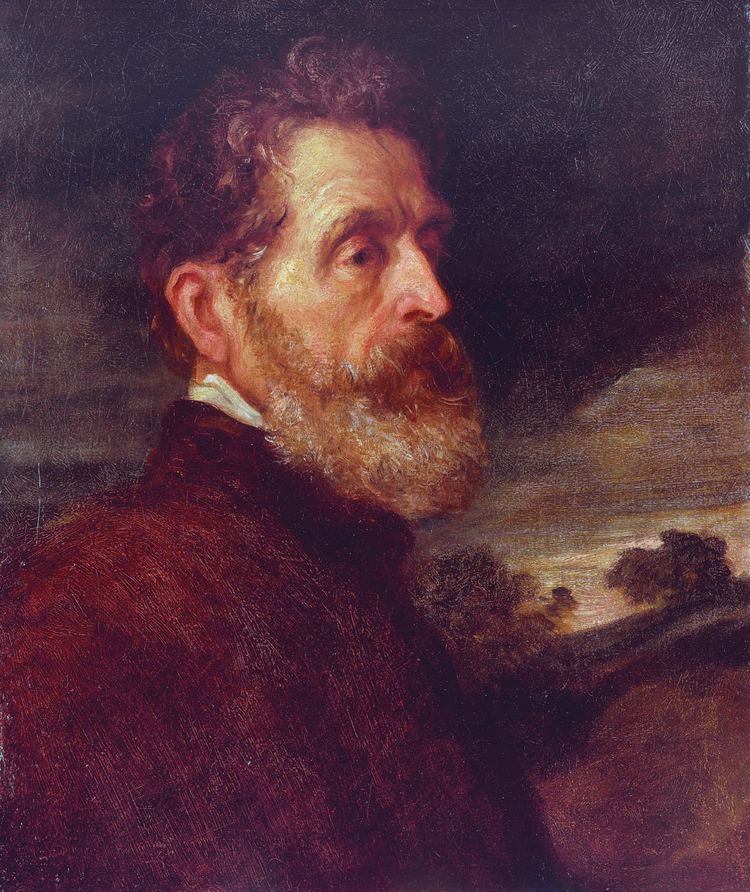
First creation, 1074
The first creation occurred in 1074 for Roger de Montgomerie, one of William the Conqueror's principal counselors. He was one of the Marcher Lords, with the Earl of Hereford and the Earl of Chester, a bulwark against the Welsh; he was granted great powers, and his territory, which extended from Shropshire (of which Shrewsbury is the county town) into Mid-Wales (the county of Montgomeryshire being named after him), was outside the ordinary administration; he was also granted lands across England.
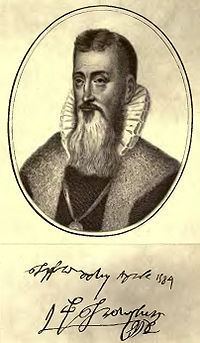
Roger was succeeded in 1094 by his younger son Hugh, his elder son Robert of Bellême succeeding to his lands in Normandy. On Hugh’s death in 1098 the earldom passed to his brother Robert.
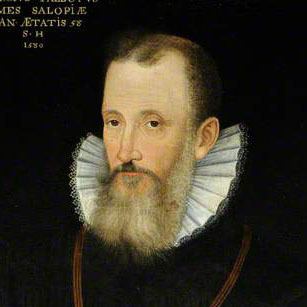
The title was forfeit in 1102 after the 3rd Earl, Robert, rebelled against Henry I and joined Robert Curthose's invasion of England in 1101.
These earls were sometimes styled Earl of Shropshire.
Second creation, 1442

The title was created for a second time in 1442 when John Talbot, 7th Baron Talbot, an English general in the Hundred Years' War, was made Earl of Shrewsbury in the Peerage of England. He was also made hereditary Lord High Steward of Ireland and, in 1446, Earl of Waterford in the Peerage of Ireland (thus, the two titles have always descended together). John Talbot, the first Earl, was succeeded by his son John, the second Earl, who had already succeeded as seventh Baron Furnivall on his mother's death in 1433. Lord Shrewsbury served as both Lord Chancellor of Ireland and Lord High Treasurer of England. He was killed at the Battle of Northampton in 1460 during the Wars of the Roses.
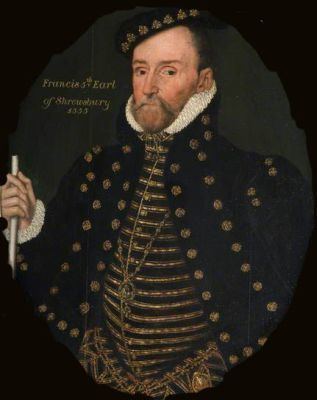
His grandson, the fourth Earl, was Lord Steward of the Household between 1509 and 1538. His son, the fifth Earl, was summoned to the House of Lords through a writ of acceleration as Lord Talbot in 1533, five years before he succeeded his father. On his death the titles passed to his son, the sixth Earl. He was summoned to the House of Lords through a writ of acceleration as Lord Talbot in 1553. Lord Shrewsbury was entrusted with the custody of Mary, Queen of Scots, and also served as Earl Marshal from 1572 to 1590. He married as his second wife the famous Bess of Hardwick.
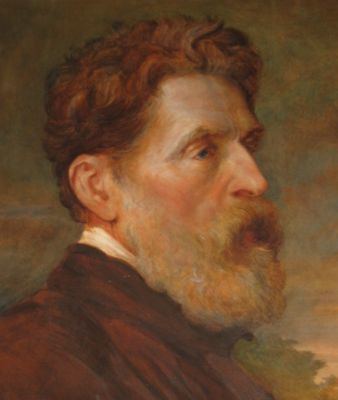
Shrewsbury was succeeded by his son from his first marriage to Lady Gertrude Manners, the seventh Earl. He represented Derbyshire in the House of Commons and served as Lord Lieutenant of Derbyshire. He had no sons and on his death in 1616 the baronies of Talbot, Strange of Blackmere and Furnivall fell into abeyance between his three daughters. He was succeeded in the earldoms by his younger brother, the eighth Earl. He was Member of Parliament for Northumberland. He did not have a male heir either and was succeeded by his distant relative, the ninth Earl. He was the great-great-grandson of Sir Gilbert Talbot (died 1518), third son of the second Earl of Shrewsbury. The family bought Barlow Woodseats Hall in 1593 as part of the estate.
He was succeeded by his nephew, George, the tenth Earl and Lord of Grafton. He was the son of John Talbot of Grafton. On his death the titles passed to his son, the eleventh Earl. He was killed in a duel with George Villiers, 2nd Duke of Buckingham. His son, the twelfth Earl, was a prominent statesman. He was one of the Immortal Seven who in 1688 invited William of Orange to invade England and depose his father-in-law James II and later served under William and Mary as Secretary of State for the Southern Department and Secretary of State for the Northern Department. In 1694 he was created Marquess of Alton and Duke of Shrewsbury in the Peerage of England. The Duke was childless and on his death in 1718 the marquessate and dukedom became extinct.
He was succeeded in his other titles by his first cousin, the thirteenth Earl. He was the son of the Hon. Gilbert Talbot, second son of the tenth Earl. Lord Shrewsbury was in the Holy Orders of the Church of Rome. On his death the titles passed to his nephew George, the fourteenth Earl (who was the son of the Hon. George Talbot). He was childless and was succeeded by his nephew Charles, the fifteenth Earl (who was the son of Charles Talbot). He began in 1812 the creation of the extensive gardens at Alveton Lodge, Staffordshire (later renamed Alton Towers) which estate had been in the family since the 15th century. When he died the titles were inherited by his nephew John, the sixteenth Earl who was the son of the Hon. John Joseph Talbot. When in 1831 the principal home of the family at Heythrop, Oxfordshire was destroyed by fire he moved the family seat to Alton Towers. The sixteenth Earl was also a noted patron of A W N Pugin. He was succeeded by Bertram, his second cousin once removed, the seventeenth Earl who was the great-grandson of the Hon. George Talbot, younger son of the aforementioned Gilbert Talbot (died 1711), second son of the tenth Earl.
Bertram died unmarried at an early age in 1856. By his will he left his estates to Lord Edmund Howard (later Talbot), son of the Duke of Norfolk, but the will was contested by three distant relatives and after a long and expensive legal case the House of Lords ruled in 1860 in favour of Henry John CHETWYND-TALBOT, 3rd Earl Talbot, who thus became the eighteenth Earl of Shrewsbury and Waterford. He was a descendant of the aforementioned the Hon. Sir Gilbert Talbot (died 1518), third son of the second Earl of Shrewsbury (see the Earl Talbot for earlier history of this branch of the family). He also held the titles of Baron Talbot, of Hensol in the County of Glamorgan, and Viscount of Ingestre, of Ingestre Hall in the County of Stafford. Lord Shrewsbury was an Admiral in the Royal Navy and also served in the second Conservative administration of the Earl of Derby as Captain of the Honourable Corps of Gentlemen-at-Arms (chief whip in the House of Lords) from 1858 to 1859.
His eldest son, the nineteenth Earl, also served as Captain of the Honourable Corps of Gentlemen-at-Arms, an office he held from 1874 to 1877 under Benjamin Disraeli. He was succeeded by his son, the twentieth Earl. He caused a scandal in Victorian England by eloping with a married woman, Ellen Miller-Mundy. They were later married. On his death the titles passed to his grandson, the twenty-first Earl. He was the son of Charles John Alton Chetwynd-Talbot, Viscount Ingestre. As of 2017 the peerages are held by the twenty-first Earl's eldest son, the twenty-second Earl, who succeeded in 1980. He is one of the ninety elected hereditary peers that remain in the House of Lords after the passing of the House of Lords Act 1999, and sits on the Conservative benches. He is also hereditary Lord High Steward of Ireland and as the holder of this office is allowed to bear a white staff at the Coronation of the British Monarch.
Lord Shrewsbury is the senior earl on the Roll in the Peerage of England (the more senior earldom of Arundel being held by the Duke of Norfolk). The earldom of Waterford is sometimes called the "Premier Earldom of Ireland on the Roll", as the oldest Irish earldom, that of Kildare, has been a subsidiary title of the Duke of Leinster for centuries and the Earl held the oldest Irish earldom held by anyone ranked as an Earl. If the Viscount Mountgarret proves his presumed claim to the 1328 earldom of Ormonde, the Earls of Shrewsbury would lose this distinction, but they derive higher precedence from their English earldom in any event. Despite holding three differently named earldoms Lord Shrewsbury is always styled simply "The Earl of Shrewsbury".
The seat of the Earls of Shrewsbury was once Alton Towers until it was sold in 1924 by the infant 21st Earl's Trustees. The family seat is still in Staffordshire, near Ashbourne and Uttoxeter.
The family crypt is the Shrewsbury Chapel in Sheffield Cathedral. In 2013, it was discovered that the majority of the Shrewsbury coffins had gone missing from the burial chamber. The current Earl has been appointed High Steward of Sheffield Cathedral. The other family crypt – that of the Chetwynd-Talbot Earls of Shrewsbury, is at the Church of St Mary The Virgin, Ingestre, Stafford.
Three other members of the Talbot family may also be mentioned. The Hon. John Talbot, son of the first Earl of Shrewsbury by his second wife Margaret Beauchamp, was created Viscount Lisle in 1451. Admiral the Hon. Walter Carpenter (who assumed the surname of Carpenter in lieu of his patronymic Chetwynd-Talbot), second son of the eighteenth Earl, was a naval commander and Member of Parliament. Major-General the Hon. Sir Reginald Talbot, third son of the eighteenth Earl, was a soldier, politician and colonial governor.
Earls of Shrewsbury, First Creation (1074)
Earls of Shrewsbury, Second Creation (1442)
Dukes of Shrewsbury (1694)
Earls of Shrewsbury, Second Creation (1442; Reverted)
The heir apparent is the present holder's son James Richard Charles John Chetwynd-Talbot, Viscount Ingestre (born 1978).
The heir apparent's heir apparent is his son George Henry Charles John Alton Chetwynd-Talbot, Lord Talbot (b. 2013).
Properties owned by the Earls of Shrewsbury (second creation)
The family seat now is Wanfield Hall, near Kingstone, Staffordshire.
